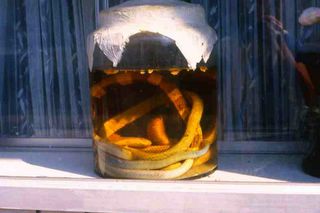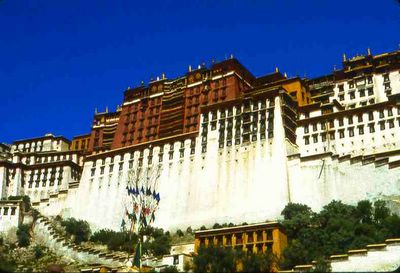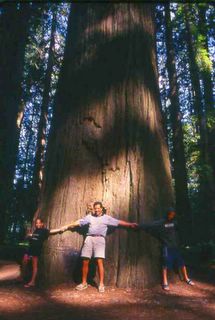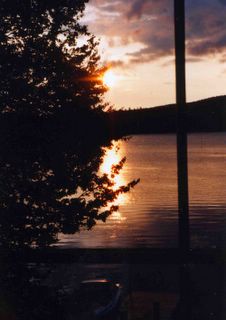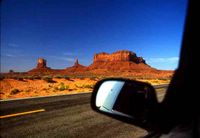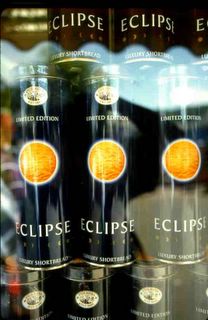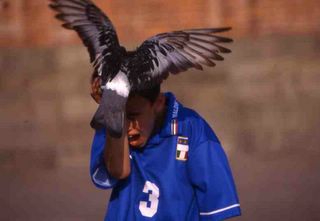
Update: March 29, 2007 --
I've stopped updating this index because Blogger's added a feature that lets me label each post with the names of the countries mentioned in each story. You can now find all the stories on, say, Argentina, by typing "Argentina" into my blog's Search window, pulling up a page that contains a post on Argentina, then clicking on "Argentina" in the "Labels" section at the end of that post. You'll then be taken to all the stories on Argentina, with the most recent appearing first.
I've also added a Google search toolbar to the blog. You can search the Web, but you can also search Ribbons of Highway. Want stories on China? Select "RibbonsofHighway.blogspot.com" in the Google search window, then type in "China." You'll get links to every post with China in its content.
-----------
Once stories slide off a blog's main page, they’re lost, since few people click on “monthly archives” to see what’s hidden there. To give you a way to find “old” stories you might enjoy or find useful, I've created a homemade pseudo-search. You can, of course, try the “Search” window in my blog’s navigation bar, but the results are spotty. Sometimes you get links to specific posts, sometimes to monthly archives, and sometimes only to the blog’s home page. And, there’s www.Soople.com, which lets you search specific websites by keyword. But type in “Malta” and http://RibbonsofHighway.blogspot.com and you get the same kind of results you get from Blogger’s “Search” button -- sometimes useful, sometimes not.
So, to supplement those search methods, I've listed below, in alpha order, destinations treated in this blog. After each are links to the monthly archives that contain stories about that destination and the dates of the posts. Clicking on the link gets you to the right month, then you scroll to the right date.
I’ll update this SEARCH list at the end of each month, and this post will be in my blog's sidebar under "Links":
Andorra – Jan05 (Jan1);Feb06(Feb2)
Argentina – Nov04 (Nov24); Apr05 (Apr14); Jun05 (Jun6) ;Jul05(Jul8);Aug05(Aug30);Feb06(Feb11);Apr06(Apr1);Jul06(Jul18)
Bahamas - Jul05(Jul11)
Belgium – Nov04 (Nov15);Oct05(Oct1)
Belize – Jan05 (Jan25)
Bolivia – Nov04 (Nov11,24); May05 (May1); Jun05 (Jun6);Oct05(Oct28);Apr06(Apr9)
Brazil – Nov04 (Nov24);Feb06(Feb11)
Bulgaria – Nov04 (Nov2)
Canada/Alberta – Nov04 (Nov4);Aug05(Aug23);Sept06(Sept29)
Canada/British Columbia - Aug05(Aug26)
Canada/Nova Scotia – Dec04 (Dec10);Dec05(Dec5)
Chile – Nov04 (Nov24);Aug05(Aug30)
China – Nov04 (Nov17,20); May05 (May6,22); Jun05 (Jun24);Aug05(Aug5);Nov05(Nov4);May06(May30);Aug06(Aug9,31);Sept06(Sept18)
Costa Rica - Dec05(Dec1)
Czech Republic – Nov04 (Nov9)
Ecuador – Nov04 (Nov18,24); Feb05 (Feb1,2)
Egypt – Oct04 (Oct28); Dec04 (Dec27)
England – Nov04 (Nov16); Apr05 (Apr21); Jun05 (Jun13);Jul05(Jul9);Feb06(Feb18);Apr06(Apr1);Jul06(Jul18)
France – Nov04 (Nov16); May05 (May3,14);Jul05(Jul5,25);Feb06(Feb2);Apr06(Apr1);Jul06(Jul18);Aug06(Aug9,31)
Germany – Dec04 (Dec20,25); Jan05 (Jan1);Oct05(Oct26);Feb06(Feb7);Jun06(Jun3)
Greece – Nov04 (Nov20); Mar05 (Mar5,22,23,24,25,26,27,28,29,30,31);Apr06(Apr19);May06(May2);Aug06(Aug9)
Greenland - Apr06(Apr22)
Guatemala – Jan05 (Jan25);Nov05(Nov15)
Honduras – Dec04 (Dec23)
Hong Kong - Dec05(Dec23);Jun06(Jun14)
Iceland – Mar05 (Mar9);Dec05(Dec10);Apr06(Apr22)
India – Nov04 (Nov22); Mar05 (Mar1); Apr05 (Apr17);Oct05(Oct04);Apr06(Apr29);Jul06(Jul18);Aug06(Aug9)
Iraq – Oct04 (Oct28); Dec04 (Dec10,25,27); May05 (May27)
Ireland – Mar05 (Mar17)
Israel – Oct04 (Oct28); Nov04 (Nov27); Dec04 (Dec27)
Italy – Nov04 (Nov4,9); Feb05 (Feb14); Jun05 (Jun6);Jan06(Jan9,14);Feb06(Feb14);May06(May11);Jul06(Jul18);Sept06(Sept18)
Jamaica – Nov04 (Nov30);Feb06(Feb22)
Japan - Oct05(Oct20)
Jordan – Oct04 (Oct28); Nov04 (Nov27); Dec04 (Dec27); Apr05 (Apr21);Sept05(Sept26);)Nov05(Nov10);Jul06(Jul18);Aug06(Aug14,31)
Kenya – Nov04 (Nov24); Dec04 (Dec3); Feb05 (Feb8); May05 (May1); Jun05 (Jun2);Oct05(Oct17);Nov05(Nov22);Jan06(Jan18);May06(May4);Jul06(Jul5);Aug06(Aug31)
Macau - Jun05 (Jun28)
Malta – Nov04 (Nov1); Apr05 (Apr5); May05 (May25);
Mexico – Dec04 (Dec23)
Morocco - Aug05(Aug17)
Nepal – Nov04 (Nov5); May05 (May6);Oct05(Oct24)
Norway- Sept05(Sept19);Sept06(Sept5)
Pakistan – Mar05 (Mar1)
Peru – Nov04 (Nov20,24); Apr05 (Apr3); May05 (May17);Jan06(Jan23);Apr06(Apr1);Jun06(Jun20,30);Aug06(Aug31)
Portugal – Nov04 (Nov4); Jan05 (Jan1); May05 (May12); Jun05 (Jun6);Aug05(Aug9);Dec05(Dec21)
Puerto Rico - Feb06(Feb25)
Russia - Jul05(Jul26);Aug05(Aug5,13);Sept05(Sept16);Feb06(Feb18);Jun06(Jun9);Jul06(Jul18)
Saudi Arabia – Oct04 (Oct28); Dec04 (Dec27)
Scotland – Nov04 (Nov19); Jan05 (Jan15,21);Jul05(Jul14);Apr06(Apr22);Jun06(Jun25)
Serbia-Montenegro/Yugoslavia – Oct04 (Oct28); Dec04 (Dec27)
Spain – Jan05 (Jan1); Apr05 (Apr24);Jul05(Jul18);Dec05(Dec14);Feb06(Feb2);May06(May24)
Switzerland – Nov04 (Nov4);Nov05(Nov9);May06(May5,20)Jul06(Jul18);Aug06(Aug24,31)
Taiwan – May05 (May22)
Tanzania – May05 (May1)
Thailand – Jan05 (Jan4,9)
Tibet – Nov04 (Nov15,20); May05 (May6); Jun05 (Jun24);Oct05(Oct24);Jul06(Jul7)
Turkey – Feb05 (Feb3); May05 (May14); Jun05 (Jun6);Sept05(Sept8);Apr06(Apr1)
US/America – Nov04 (Nov1); May05 (May27); Jun05 (Jun14);Jul05(Jul20)
US/Arizona - Oct05(Oct12)
US/California - Jun05 (Jun19);Oct05 (Oct31);May06(May8)
US/Colorado - Aug06(Aug31)
US/Florida – May05 (May14)
US/Hawaii – May05 (May14);Aug06(Aug31)
US/Idaho – Dec04 (Dec7)
US/Illinois - Feb06(Feb18)
US/Kentucky – May05 (May7);Jan06(Jan30);Aug06(Aug31)
US/Louisiana – Apr05 (Apr12);Jul05(Jul1);Sept05(Sept1,3);Nov05(Nov4);Aug06(Aug29)
US/Maryland – Dec04 (Dec16)
US/Massachusetts – Nov04 (Nov29); Mar05 (Mar14); Apr05 (Apr24);Apr06(Apr01,12);May06(May11,20)
US/Minnesota – Feb05 (Feb6)
US/Montana – Apr05 (Apr30);Jun06(Jun17)
US/Nevada - Apr06(Apr5,16);May06(May8,11)
US/New Hampshire – Nov04 (Nov29); Jan05 (Jan1); May05 (May 6,14); Jun05 (Jun17);Jul05(Jul1);Aug06(Aug31);Sept06(Sept22)
US/New Mexico – Nov04 (Nov11); Feb05 (Feb26); May05 (May 14);Oct05(Oct07,08);May06(May13);Jun06(Jun6);Aug06(Aug31)
US/New York – Nov04 (Nov9); Feb05 (Feb17,21); Mar05 (Mar3); Apr05 (Apr7);Sept05(Sept11); Nov05(Nov27);Dec05(Dec18,26);Feb06(Feb18);Aug06(Aug31);Sept06(Sept11)
US/Ohio – Dec04 (Dec16)
US/South Dakota – May05 (May 14);Jan06(Jan5);Apr06(Apr25);May06(May11);Aug06(Aug3)
US/Tennessee – Jan05 (Jan17);Jul06(Jul13)
US/Utah - May06(May13)
US/Virginia – Dec04 (Dec16)
US/Washington, D.C. – Dec04 (Dec16)
US/Wyoming – Apr05 (Apr30)
Wales – Apr05 (Apr27);Jul06(Jul18)
